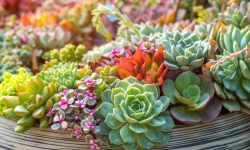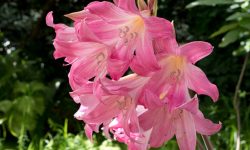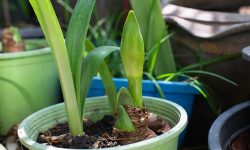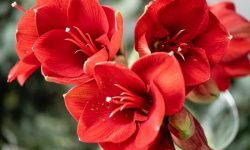Poppies are cherished for their brilliant colors and delicate petals, bringing charm and vibrancy to any garden. While they bloom naturally for a limited period, gardeners often wish to extend the flowering season. Understanding how to prolong poppy blooms is key to maximizing their visual impact and enjoyment.
Proper care, combined with targeted techniques, can significantly increase bloom longevity. From selecting the right varieties to implementing seasonal strategies, gardeners can encourage continuous flowering. This guide provides essential tips to maintain vibrant, long-lasting poppies, ensuring your garden remains colorful and alive throughout the season.
Understanding Poppies and Bloom Duration
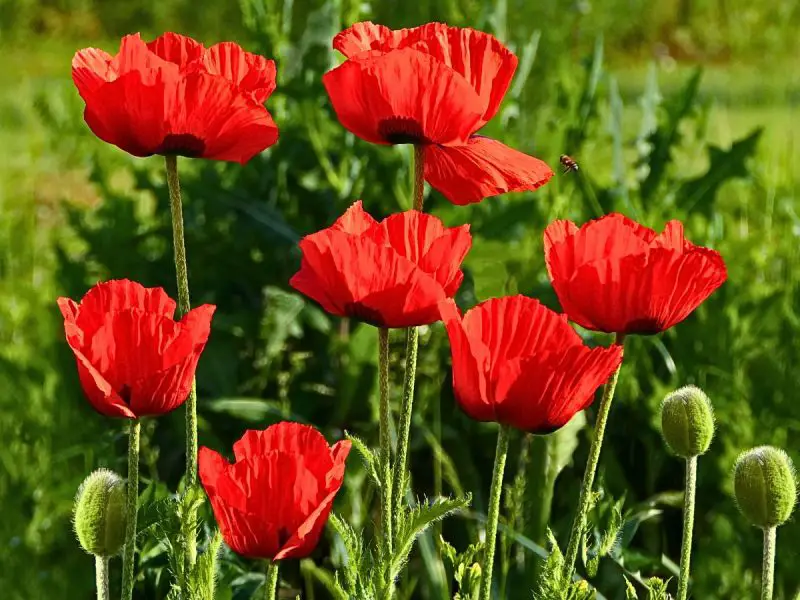
Poppies are renowned for their bright, delicate flowers, yet the length of their bloom varies widely depending on species, climate, and care. Annual poppies generally bloom for six to eight weeks, offering a vibrant but brief display. Biennials and perennials can produce flowers over multiple seasons, especially when given proper care and favorable conditions. Understanding the natural bloom cycle of your poppy variety is the first step toward extending its flowering period.
Several factors influence how long poppies bloom. Sunlight is crucial; poppies require full sun to promote strong, prolonged flowering. Soil quality and drainage impact root health, which in turn affects bloom duration. Temperature fluctuations, particularly extreme heat, can shorten flowering periods, while consistent, moderate conditions help maintain petals longer. Adequate water without overwatering prevents stress that could reduce flower longevity.
By recognizing these influencing factors, gardeners can implement strategies to maximize bloom time. Selecting varieties known for longer flowering, planting in optimal conditions, and providing attentive seasonal care all contribute to extended display. Observing plants regularly allows for timely interventions, such as deadheading or pest control, ensuring that poppies remain vibrant throughout the growing season. With this foundational understanding, gardeners are better equipped to apply techniques that prolong flower life and maintain a visually stunning garden.
Choosing the Right Variety for Extended Bloom
Selecting the appropriate poppy variety is crucial for maximizing bloom duration. Annual poppies, such as the Shirley or Flanders types, offer quick, vibrant displays but usually bloom for only a short period. For gardeners seeking longer-lasting flowers, biennial or perennial varieties like Oriental poppies or Iceland poppies provide extended or repeat blooms across multiple seasons, making them ideal for sustained color.
Flower form and size also influence bloom longevity. Single-petaled poppies tend to last longer per bloom compared to double or ruffled varieties, which can wilt more quickly under heat or heavy rain. Additionally, some varieties are bred for later flowering, allowing gardeners to stagger planting and enjoy continuous color. Matching flower height, color, and bloom time with your garden design ensures that poppies not only last longer but also enhance overall visual appeal.
Understanding the growth requirements of each variety further supports extended flowering. Sunlight, soil type, and water needs should align with the chosen species. Planting in the right location, coupled with attentive care such as timely deadheading and disease monitoring, helps flowers remain healthy and vibrant. By choosing varieties suited to your climate and garden conditions, you set the foundation for prolonged, flourishing blooms that maintain color and structure throughout the season.
Ideal Growing Conditions for Long-Lasting Poppies
Sunlight Requirements
Poppies thrive in full sun, ideally receiving at least six hours of direct sunlight daily. Adequate light strengthens stems, encourages healthy foliage, and supports prolonged flowering. Insufficient sunlight often results in leggy plants with weaker stems, fewer blooms, and shorter-lasting flowers, diminishing the garden’s visual impact. Selecting a well-lit location ensures that each plant develops robust growth and maintains vibrant color throughout the season.
Sunlight also helps reduce fungal problems by keeping foliage dry and improving air circulation. Morning sunlight is particularly beneficial, as it quickly evaporates dew, energizes early growth, and encourages stronger blooms. Gardeners should observe sun patterns to position plants strategically, ensuring they receive consistent light exposure. By prioritizing optimal sunlight, poppies develop sturdier stems and more flowers that open gradually and last longer. Coupled with proper care, full sun is a key factor for achieving abundant, long-lasting blooms that enhance any garden display.
Soil Quality and Drainage
Well-draining soil is essential for poppies to thrive and maintain long-lasting flowers. Sandy or loamy soils enriched with organic matter provide necessary nutrients without retaining excess moisture, which can lead to root rot and shorten bloom life. Poorly draining soils create stress, weaken plants, and reduce flowering periods.
Incorporating compost or well-aged organic matter improves soil fertility and structure, supporting strong root systems and sustained blooms. Avoid overusing nitrogen-rich fertilizers, which encourage leaf growth at the expense of flowers. Maintaining slightly acidic to neutral soil pH ensures optimal nutrient uptake. Healthy soil fosters vigorous growth, strong stems, and abundant flowers, all of which contribute to an extended bloom period. Regularly checking soil texture and moisture helps gardeners adjust care practices, providing ideal conditions that allow poppies to remain vibrant and visually striking throughout the season.
Temperature and Moisture Management
Temperature and water management significantly influence how long poppy flowers last. Cool to moderate temperatures help petals stay fresh longer, while excessive heat can cause rapid wilting and shorten bloom duration. Mulching around plant bases stabilizes soil temperature, conserves moisture, and protects roots from environmental stress.
Consistent watering is crucial during dry spells, but overwatering must be avoided to prevent fungal issues like root rot. Proper spacing between plants ensures adequate airflow, sunlight penetration, and nutrient availability, which collectively promote healthy growth. Monitoring environmental conditions and adjusting care—such as watering schedules and mulching—helps maintain plant vitality. By managing temperature and moisture effectively, gardeners can extend flowering periods, ensuring poppies remain vibrant and resilient. Healthy plants under optimal conditions consistently produce strong, upright stems and long-lasting blooms, providing continuous color and beauty in the garden.
Planting Poppy Seeds
Planting poppy seeds correctly is crucial for successful germination and abundant, long-lasting blooms. Poppies are best sown directly into the garden because they do not transplant well. Choose a location that receives full sun for at least six hours daily, with well-draining soil to prevent waterlogging. Lightly prepare the soil by removing weeds, breaking up clumps, and leveling the surface. Avoid adding excessive fertilizer, as high nitrogen levels can encourage leafy growth at the expense of flowers.
Scatter seeds thinly across the soil surface, pressing them gently to ensure contact but avoiding deep burial. Poppy seeds require light to germinate, so covering them too much can hinder sprouting. Keep the soil consistently moist during germination, which typically occurs within 10 to 20 days depending on temperature and seed quality. Protect the soil from heavy rain, which can displace seeds, and from strong winds that may dry out or damage delicate seedlings.
After seedlings emerge, thin them carefully to prevent overcrowding. Proper spacing allows each plant to develop a strong root system and sturdy stems, enhancing bloom quality. Crowded plants compete for nutrients, water, and sunlight, reducing flower size and longevity. Maintaining even soil moisture and adequate sunlight supports healthy growth and prepares plants for a long flowering period. Additionally, light mulching can help retain moisture and regulate soil temperature without suffocating seedlings. By following these steps, gardeners create optimal conditions for poppy seedlings to thrive. Healthy young plants will develop into vigorous adults, producing continuous blooms that brighten the garden. Proper planting techniques are the foundation for a vibrant and colorful garden display throughout the growing season, maximizing both aesthetic appeal and plant health.
Planting Poppy Seeds for Extended Bloom
Timing and Site Selection
The timing of sowing poppy seeds is critical for maximizing bloom duration. Early spring sowing allows seedlings to establish strong roots before the heat of summer, promoting healthy growth and a longer flowering period. In cooler climates, late summer sowing can encourage blooms the following spring, extending the visual appeal of your garden. Proper timing helps plants avoid stress from extreme temperatures, ensuring that flowers open gradually and maintain vibrant color for an extended period.
Selecting the right site is equally important. Poppies require full sun for at least six hours a day, well-draining soil, and good air circulation. Areas with heavy shade or poor airflow increase the risk of disease and reduce flower longevity. By choosing an optimal location, gardeners provide the best foundation for strong stems and abundant blooms. Combining careful timing with strategic site selection ensures that poppies are healthy, resilient, and capable of producing long-lasting flowers that enhance the garden’s beauty throughout the season.
Seed Preparation and Sowing Techniques
Proper seed preparation improves germination rates and promotes uniform growth, supporting extended flowering. Some poppy varieties benefit from light stratification, such as a brief chilling period before sowing, which mimics natural winter conditions and encourages consistent sprouting. Healthy seedlings grow more vigorously and produce stronger stems capable of sustaining longer blooms.
When sowing, scatter seeds lightly on the soil surface and press gently to ensure contact without burying them deeply. Poppy seeds require light to germinate, so covering them can hinder emergence. Keep the soil consistently moist but not soggy, as excessive water can cause damping-off disease. Early attention to these details reduces stress on seedlings, encourages uniform growth, and creates a strong foundation for long-lasting flowers. Following these techniques ensures that poppies are well-prepared to deliver vibrant, extended blooms throughout the growing season.
Thinning and Early Care
Thinning seedlings is essential to prevent overcrowding, which can weaken stems, reduce flower size, and shorten bloom duration. Proper spacing allows adequate sunlight, air circulation, and nutrient access, all critical for healthy growth. Thin carefully when seedlings are a few inches tall, removing weaker plants to let strong ones thrive.
Early care involves consistent, gentle watering, monitoring for pests such as aphids and slugs, and applying mulch to retain moisture and regulate soil temperature. Deadheading early blooms redirects energy into producing more flowers rather than seed production. These steps promote vigorous growth, healthy stems, and abundant flowers. By combining careful thinning with attentive early care, gardeners can significantly extend the flowering period, ensuring that poppies remain vibrant and provide continuous color and beauty throughout the season.
Caring for Poppies Throughout the Season
Spring Care and Early Maintenance
Spring is a crucial time for poppies to establish healthy growth. Begin by removing any winter debris and old mulch to allow soil to warm and improve airflow around the plants. Early fertilization with a balanced, low-nitrogen fertilizer encourages strong root development and sturdy stems, which are essential for supporting long-lasting blooms.
Watering should be consistent but moderate, keeping the soil moist without waterlogging. Monitor for pests like aphids or slugs, which can damage young foliage and affect flower production. Light pruning of damaged or weak growth directs energy into developing healthy stems and buds. Implementing these spring care techniques ensures that poppies establish a strong foundation, promoting continuous flowering and vibrant, long-lasting blooms throughout the growing season.
Summer Care and Bloom Management
During summer, poppies enter their peak flowering phase. Deadheading spent blooms is vital to extend flowering, as it redirects energy from seed production back into new flower development. Regularly check for signs of heat stress or wilting, providing supplemental water as needed during dry periods to maintain soil moisture and prevent premature flower loss.
Mulching helps regulate soil temperature and conserve moisture, reducing stress on plants. Avoid excessive fertilization, which can lead to abundant foliage but fewer flowers. Monitoring for pests and diseases continues to be important, as summer heat can exacerbate problems. By actively managing blooms and maintaining ideal conditions, gardeners can maximize the duration and vibrancy of poppy flowers throughout the summer months.
Fall Care and Preparing for Next Season
As fall approaches, poppies may begin to decline, but proper care can support future blooms. Allow some seed pods to mature for natural reseeding, ensuring a continuous display in the following season. Remove dead or decaying foliage to prevent disease and promote overall plant health.
Apply a light layer of mulch to protect roots from frost and temperature fluctuations. Fertilizing lightly in late fall encourages root storage and energy accumulation for spring growth. Gardeners should continue monitoring for pests and diseases and prune any damaged stems. By maintaining attentive care in the fall, poppies remain healthy and resilient, ensuring strong early growth and vibrant, long-lasting flowers in the next season.
Pest and Disease Management
Common Pests and Their Control
Poppies are susceptible to several pests that can affect bloom quality and duration. Aphids, slugs, and caterpillars are among the most common. Aphids feed on sap, weakening stems and reducing flower longevity. Slugs and snails can damage young seedlings and leaves, compromising plant health and bloom potential.
Controlling pests early is essential to maintain vibrant, long-lasting flowers. Regularly inspect plants for signs of damage or insect presence. Manual removal, such as handpicking slugs or spraying aphids with water, is effective for small infestations. For larger problems, consider using natural predators like ladybugs or organic insecticidal soaps. Preventive measures, such as spacing plants for good airflow and removing debris, reduce pest habitats. By managing pests proactively, gardeners protect blooms, ensuring poppies remain healthy and continue to produce vibrant flowers throughout the season.
Disease Prevention and Management
Fungal diseases such as powdery mildew, downy mildew, and root rot can significantly reduce bloom duration in poppies. Poor air circulation, excessive moisture, and overcrowding increase the risk of infection. Diseased plants may exhibit wilted foliage, discolored leaves, or stunted blooms, affecting overall display quality.
Preventing disease begins with proper planting techniques and site selection. Ensure well-draining soil, avoid overhead watering, and maintain adequate spacing between plants. Removing infected foliage promptly limits the spread of pathogens. Mulching helps regulate soil moisture and temperature, reducing stress that makes plants more susceptible to disease. Organic fungicides can be used as a preventive measure, particularly in humid conditions. By implementing careful disease management practices, gardeners protect flower longevity and ensure that poppies maintain vibrant, extended blooms throughout the season.
Staking and Supporting Tall Stems
Importance of Supporting Tall Stems
Many poppy varieties, especially Oriental and Perennial types, produce tall stems that can easily bend or break under the weight of large blooms or wind. Supporting these stems is crucial for maintaining flower longevity and visual appeal. Unstaked plants may droop, causing petals to touch the ground, which can lead to damage and premature wilting.
Providing support helps flowers remain upright, exposing blooms to sunlight and airflow. This not only enhances the display but also reduces disease risk. Proper staking techniques include using bamboo stakes, cages, or plant rings placed carefully around stems without restricting growth. Early support prevents stem damage as plants grow taller, ensuring flowers remain strong and vibrant throughout their bloom period.
Techniques for Effective Staking
To support poppies effectively, select stakes slightly taller than the expected plant height. Gently tie stems with soft garden ties, avoiding tight knots that could damage tissue. Check ties periodically as plants grow, adjusting to prevent constriction.
Cluster staking can be used for groups of plants, providing stability and reducing individual maintenance. Mulching around the base stabilizes soil and prevents stakes from shifting. Regularly inspect supports, especially after heavy rain or wind, to maintain upright growth. By combining proper staking techniques with ongoing maintenance, gardeners ensure that poppies retain structural integrity and maximize flower longevity, providing a continuous, vibrant display throughout the season.
Companion Planting and Landscaping Ideas with Poppies
Companion Plants for Extended Bloom
Companion planting is a strategic way to extend poppy bloom periods and improve garden health. Pairing poppies with plants that bloom at different times ensures continuous color. Plants such as lavender, salvia, and catmint not only provide overlapping blooms but also enhance pollinator activity. Beneficial insects like bees and ladybugs are attracted to companion plants, helping to control pests that could otherwise damage poppies and reduce flower longevity.
Beyond bloom timing, companion plants can create microclimates that protect poppies from harsh conditions. Taller companions can provide partial shade during peak summer heat, reducing stress and preventing early wilting. Choosing companions with similar sunlight, water, and soil preferences ensures all plants thrive together. When carefully selected, companions promote strong, healthy growth and prolonged flowering. Gardeners who integrate companion planting can enjoy a more resilient garden with sustained color, vibrant flowers, and a balanced ecosystem that supports extended bloom periods for poppies throughout the season.
Designing Colorful Borders and Beds
Borders and mixed flower beds are ideal for showcasing poppies while extending their visual impact. Combining different poppy varieties with staggered bloom times creates continuous color. Taller varieties planted at the back or center of beds provide structure, while shorter varieties in front ensure visibility and adequate sunlight for all flowers.
Integrating perennials and annuals with complementary heights and textures enhances visual appeal and supports longer flowering periods. Layering plants based on bloom time, color, and height creates dynamic displays that maintain interest throughout the season. Proper spacing allows air circulation, reducing disease risks and supporting healthy growth. Thoughtful garden design helps poppies thrive while extending their visual and bloom longevity. By combining strategic placement with complementary plants, gardeners can achieve vibrant, long-lasting flower beds that offer continuous color, structural beauty, and prolonged enjoyment of poppy blooms.
Naturalizing Poppies in Meadows and Lawns
Naturalizing poppies in meadows or lawns provides a low-maintenance approach to extending blooms. Scattering seeds in early spring or fall encourages natural variation in flowering times, resulting in a longer, staggered display. Populations established in this way often rebloom year after year with minimal intervention.
Combining poppies with native grasses and wildflowers supports biodiversity and attracts pollinators, which improves overall garden health. Minimal human interference allows flowers to complete their life cycles naturally, reducing stress and promoting longevity. Naturalized areas mimic wild ecosystems, giving poppies a chance to flourish while creating a relaxed, aesthetically pleasing garden style. By planning naturalized zones carefully, gardeners can enjoy prolonged poppy blooms while supporting sustainable and ecologically balanced landscapes, enhancing both visual beauty and environmental benefits throughout the growing season.
FAQ About How Long Poppies Bloom
How long do poppies typically bloom?
Poppy bloom duration varies by species and climate. Annual poppies usually flower for six to eight weeks, while biennials and perennials can produce blooms across multiple seasons. Environmental conditions, care practices, and proper site selection all influence how long flowers remain vibrant. Adequate sunlight and soil moisture help extend bloom time.
Can deadheading really prolong poppy flowering?
Yes, deadheading—removing spent blooms—redirects plant energy from seed production to new flower development. Regularly deadheaded poppies often produce more flowers over an extended period. This simple maintenance technique helps maintain plant vigor, encourages successive blooms, and ensures a longer display of vibrant flowers throughout the growing season.
What soil conditions best support long-lasting poppy blooms?
Well-draining, nutrient-rich soil is essential for extended flowering. Sandy or loamy soils with organic matter promote healthy roots and prevent root rot. Maintaining slightly acidic to neutral pH ensures optimal nutrient uptake. Proper soil quality supports strong stems, abundant flowers, and longer bloom duration for healthier, more vibrant poppies.
How can pests and diseases affect bloom longevity?
Aphids, slugs, and fungal diseases can reduce flower quality and shorten bloom periods. Infestations weaken stems and damage foliage, while fungal infections cause wilting or discoloration. Early detection, proper spacing, and preventive measures such as mulching, natural predators, or organic treatments help maintain healthy plants and extend flowering duration.
Are there specific companion plants that enhance poppy blooms?
Yes, companion plants like lavender, salvia, and catmint support prolonged flowering by attracting pollinators and beneficial insects. Taller companions can provide partial shade to reduce stress during heat. Choosing species with similar light, water, and soil requirements ensures both plants thrive, resulting in longer-lasting, healthier, and more vibrant poppy blooms.
Conclusion
Poppies are stunning additions to any garden, offering vibrant color and delicate beauty. By choosing the right varieties, providing ideal sunlight and soil, and following proper planting and care techniques, gardeners can significantly extend their flowering periods. Regular deadheading, attentive pest and disease management, and thoughtful companion planting further support long-lasting blooms. Whether in structured borders or naturalized meadows, well-cared-for poppies maintain health, resilience, and visual appeal. With careful planning and consistent care, these remarkable flowers can brighten your garden with continuous, long-lasting beauty throughout the season.

